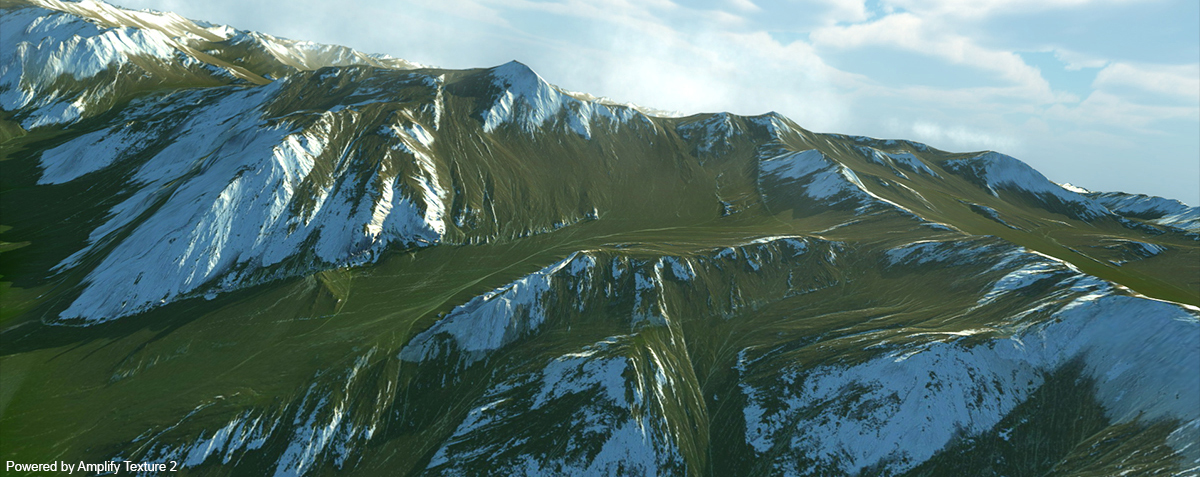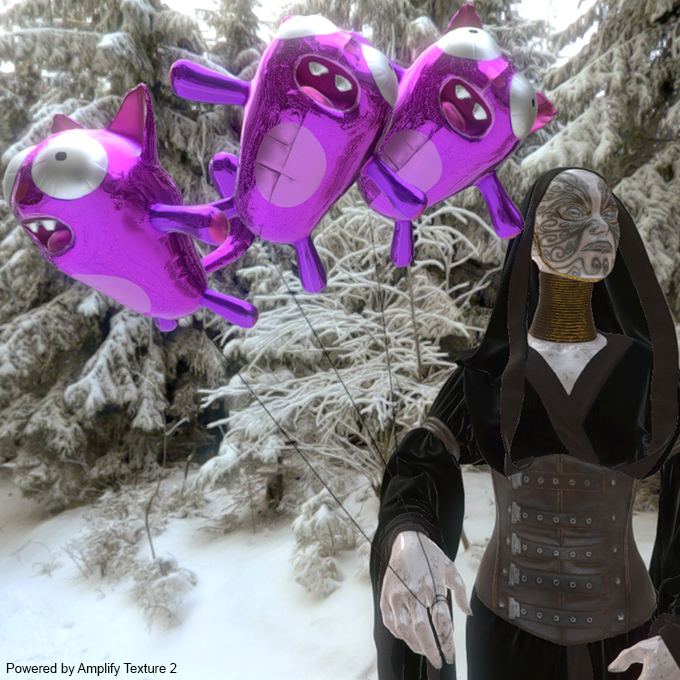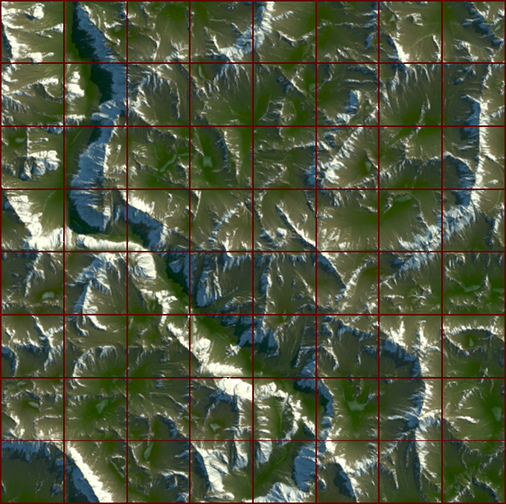Hello everyone, we are happy to share with you Part 1 of the series Amplify Your Game. In the first 2 videos we will compare a Standard Scene with an Amplified Scene and demonstrate some of the advantages gained by using AT2. Part 1 includes a side by side stat comparison and a complete overview of the texture data used. Part 2 will be released tomorrow, we will continue to publish content under this news series covering different types of projects and approaches. We would love to hear your suggestions, send us your ideas via email or social networks and we will certainly look into it.
The scene presented could, of course, be built in a different way; e.g. using control maps and tileable textures. However, what we intend to demonstrate in this video is that every texel in your scene can be unique – much like the sample terrain we show in the video – where you can use procedural methods, hand painted methods, or a mix of both to unleash your creativity. Every object in the scene can be virtualized, not just terrains.
The following video does not represent the final quality or performance of the final AT2 version, Unity applications perform slower in the Editor.
Amplify Texture 2 – Alpha 33
If you have not already, try the recently released Alpha 33, complete Unity 5 support, including both metallic and specular universal shader, real-time GI support, Oculus Rift support, SLI/CrossFire support, EXR 2.0 support, Multiple camera support, solid/seamless anisotropic filtering and fixed texture addressing issues across the board specifically involving multi-VT support.
Most importantly, the full version now includes the FULL SOURCE CODE for all managed code/scripts and all major known issues in previous builds have also been addressed.
We also simplified our EULA to reflect the standard Unity Asset Store license. The only major difference is that each Pre-Order provides you with a 3-Seat License, unlike the Unity Asset Store 1-Seat Editor Extension terms.
Product Page
Workflow & Specifications
The terrain was generated in World Machine and exported using the Multi-Tile built in support; both meshes and textures were exported in tiled format. Assembling the scene went without any issues with Amplify Texture 2, using the batching methods provided it was possible to optimize it further than with standard methods.
Each Terrain set is composed of 64 unique tiles and 128 4k Textures (Diffuse+Normal), coming to approximately 8 GB. The Amplified version had no problem going up to 512 Tiles while the Standard version could only keep up (barely) to 128 Tiles.
Recording the 128 Standard Scene proved to be a real challenge, while adding the materials Unity crashed and froze constantly making it impossible to work with. In order to be able to record the actual 128 Tiles, we would add a couple of tiles save the scene and restart Unity, rinse and repeat. Although we were finally able to record the necessary video, we can attest to the fact that building the scene without Amplify took several additional hours, a ridiculous and valuable amount of time wasted for something that can be done in literally a couple of minutes using Amplify
It’s very likely that you have experienced slow scene loading, stuttering, random memory related crashes and unexplainable halts; you can end that today! The advantages gained by using Amplify Texture 2 will be extremely beneficial when working in the Unity Editor, try it today, for free(no sign up required).







